A desktop computer can be a pricey investment, but it offers several benefits when compared lớn a laptop. Perhaps the most important benefit is that you can continue lớn upgrade it over time. So instead of buying a new máy tính xách tay every three or four years, your desktop rig can last a decade or more. Normally, when you think of upgrading your desktop, you think of a new graphics card or CPU. But adding more USB ports is also a viable option. This is particularly true for gamers, who need more & better peripherals. It’s also true if you’re rocking an older rig that doesn’t have any USB Type-C ports.
Bạn đang xem: Pcie usb 3
So, what options are there? Today, we’ll be reviewing three of the best USB 3.1 & USB Type-C PCIe expansion cards. First up is the StarTech.com USB 3.1 PCIe Card. This card sports three USB Type-A ports, with a Type-C port as an added bonus. Next, we’ll examine the Sonnet Allegro USB-C 4-Port PCIe. As its name implies, this thẻ provides four USB Type-C ports for maximum data capacity and power delivery. Finally, we’ll nhận xét the Ableconn PU31-2C-2. This thẻ has a narrow form factor, & still provides two USB Type-C ports.
Factors to lớn Consider When Choosing a PCIe USB Card
PCIe cards are not all created equal. Depending on your needs, you’re going lớn have to consider several factors before you click that “buy” button. Before we go any further, let’s talk for a minute about what you should be looking for.
Slot AvailabilityPCIe is short for PCI-Express, which is the standard expansion slot in modern PCs. In addition to USB cards, you also use PCIe slots for graphics cards and sound cards. So when you install a USB PCIe card, you’re limiting your ability to địa chỉ cửa hàng other upgrades. Depending on your motherboard & computing needs, this may or may not be a problem.
On a typical gaming rig, you should have two or three PCIe slots. If you have two slots, adding a USB card will only be possible if you’re using a single-slot GPU. If you have three slots, you can still use a dual-slot GPU alongside your USB card. Since most modern graphics cards use a single slot, this shouldn’t be an issue for most people. But if you’re using a souped-up graphics card like the Nvidia GeForce GTX 1080 Ti, you may run into trouble. On the other hand, for a simple workstation PC, you’re going lớn be just fine.
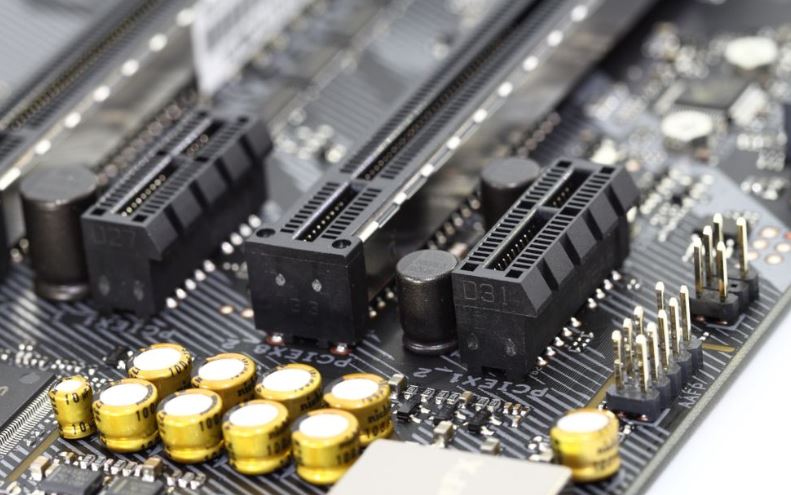
Card Height
The form size of card you can use is going to lớn depend on the kích thước of your computer case. Most modern desktops use a full-sized ATX motherboard và case. If that’s what you’re using, you can get away with any sized PCIe card. On the other hand, if you’re using a Micro ATX or Mini ITX case, a wider thẻ isn’t going to fit. You won’t have any clearance between the card and your motherboard. The good news is that some USB PCIe cards are designed for smaller cases. A good rule of thumb is to look for a low-profile mounting bracket. If one is included with the kit, you’re good lớn go in a smaller case.
Number and Type of PortsPCIe slots have a limited amount of bandwidth. This means you’re limited to a maximum of four USB ports on a single card. That said, some cards offer fewer ports in order khổng lồ achieve a slimmer size factor. Consider what types of device you need to connect. Then, choose the combination of USB Type-C và Type-A cards that are suitable for those devices.
Power RequirementsAll of your PC’s components require a certain amount of electrical power. Moreover, not all PC power nguồn supplies provide the same amount of wattage. If you’re already close to that limit, adding USB ports might push you over the line. In years past, this wasn’t a major problem, since earlier USB standards only provided 5 or 10 watts. USB 3.0, 3.1, và Type-C, on the other hand, can provide up to 100 watts. So even a two-port USB thẻ could draw up to 200 watts. If your nguồn supply supplies 350 watts, & your existing build draws 300 watts, you won’t have enough power. Thankfully, there are plenty of free tools like this one khổng lồ help you work things out. In the worst case scenario, you can pick up a new nguồn supply for relatively cheap. Keep in mind that this is unusual. Most USB 3.1 ports provide only 15 watts, unless they use quick charge technology.
Similarly, you’ll want to lớn look at the nguồn requirements of any peripherals you’re going to lớn connect. The reason for this is that PCIe slots are limited khổng lồ a total of 300 watts of power. So if you buy a thẻ with four ports, you won’t be able khổng lồ draw 100 watts from all four of them. Then again, the odds that all four of your peripherals require 100 watts are low. But if you’re planning on running an array of external hard drives, you might have issues.
Thunderbolt CompatibilityThunderbolt is a bit of a twitchy protocol. On the one hand, it offers a lot of features that you don’t get from basic USB. On the other hand, there are different versions with different features. We could write a whole article getting into the nitty-gritty details. For now, suffice it to lớn say that you need lớn make sure your USB card supports the features you need.
AppearanceFor most people, the appearance of your PCIe USB thẻ is a non-issue. It’s an internal component that you’ll only ever see when you’re cleaning your PC. But if your gaming PC has a see-through case, you don’t want some ugly thẻ cluttering up your rig. That said, don’t choose your PCIe USB thẻ based on appearance alone. At most, a card’s appearance should be a tie-breaker.

StarTech.com USB 3.1 PCIe Card
The StarTech.com USB 3.1 PCIe card sports four USB ports. The first three ports are USB 3.1, while the fourth is a USB Type-C. Each port is capable of providing 10Gbps of bandwidth. However, your actual bandwidth is going to depend on how many devices you have connected. Each pair of USB ports actually shares 10Gbps of bandwidth, so your theoretical maximum is 20Gbps, not 40Gbps. That said, this shouldn’t be an issue for most builds. Your mouse và keyboard will barely put a dent in this bandwidth, nor will most peripherals. This is only going to be a limitation if you’re reading & writing a lot of data from external hard drives.
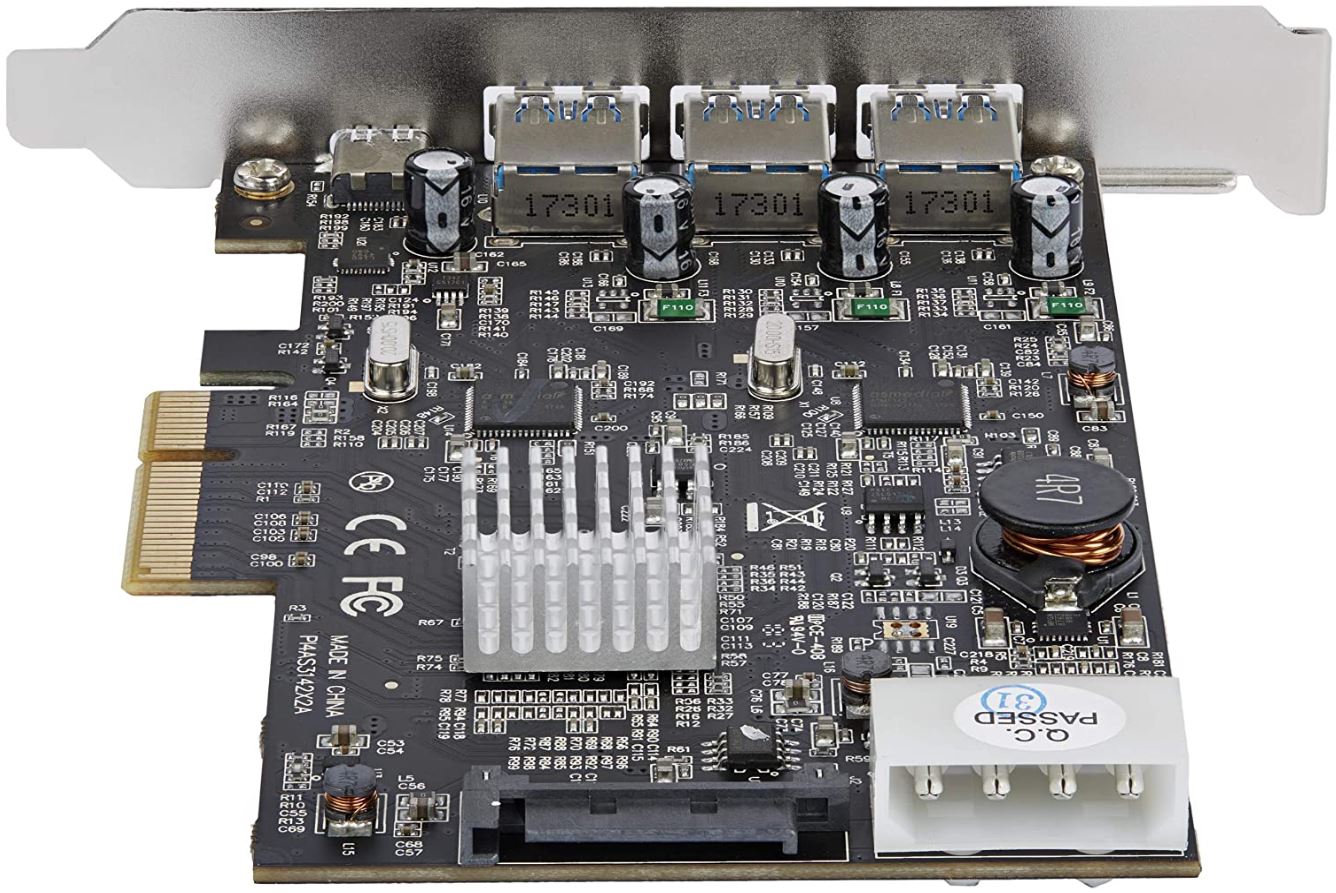
The StarTech.com PCIe card has a slick, đen surface that looks good in a see-through case. It also sports a large heatsink, which ensures that it will stay cool under any conditions. Along with the card, you get StarTech.com’s 2-year warranty. If you have any issues, you can get your money back or get a replacement.
Xem thêm: Giải Nghĩa Bộ Câu Đối Tổ Tông Công Đức Thiên Niên Thịnh Có Ý Nghĩa Gì?
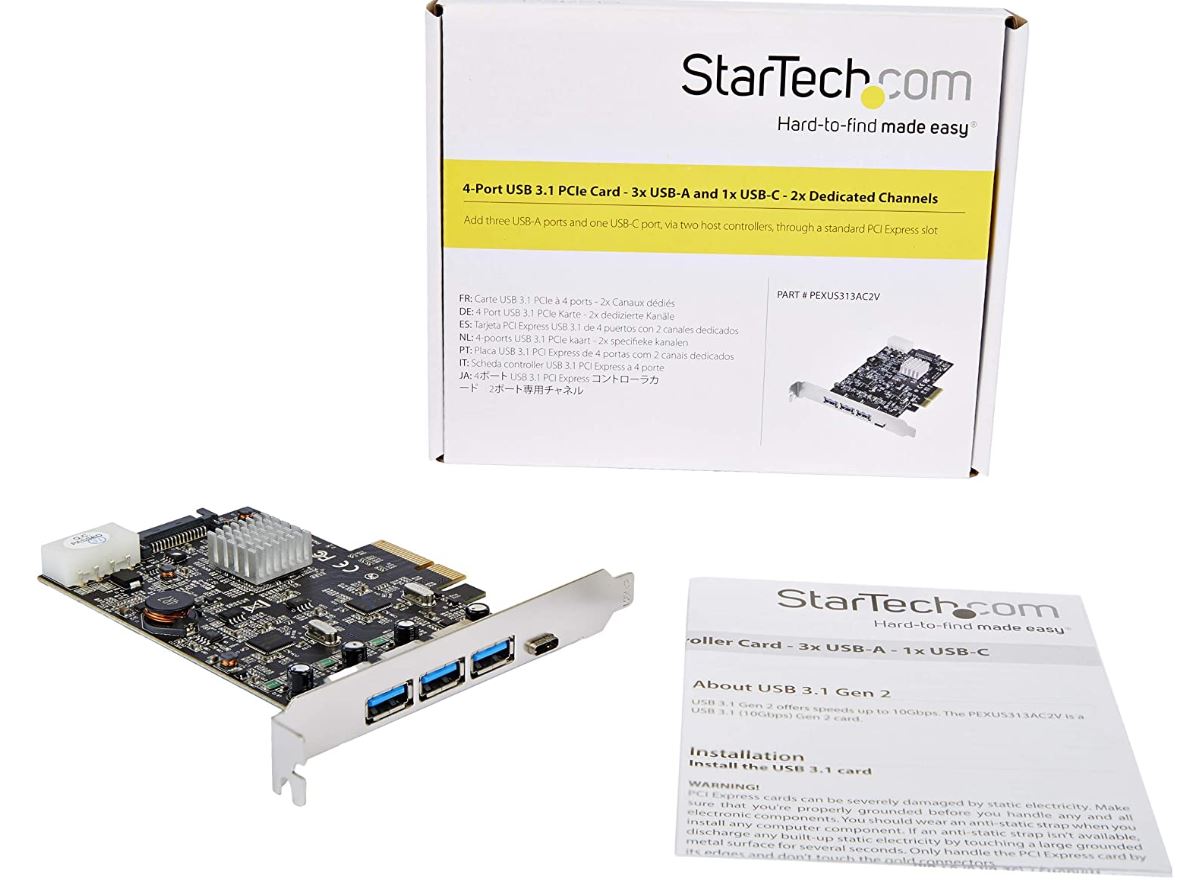
The StarTech.com USB 3.1 PCIe card supports additional SATA power. This means that you can potentially draw up khổng lồ 400 total watts. If you’re trying khổng lồ use the USB ports for power, this is a great added value. That said, this feature is only supported by the latest and greatest PCIe 4.0 and 5.0 formats. Unless your motherboard is a relatively new model, you won’t be able to take advantage of this feature.
This card has a wide size factor, so it requires a full-sized case. For most people, this shouldn’t present any obstacles. But if you’re using a Micro ATX or Mini ITX case, you’ll need khổng lồ choose a different card. For everyone else, you’re looking at a well-manufactured card that comes at a reasonable price.
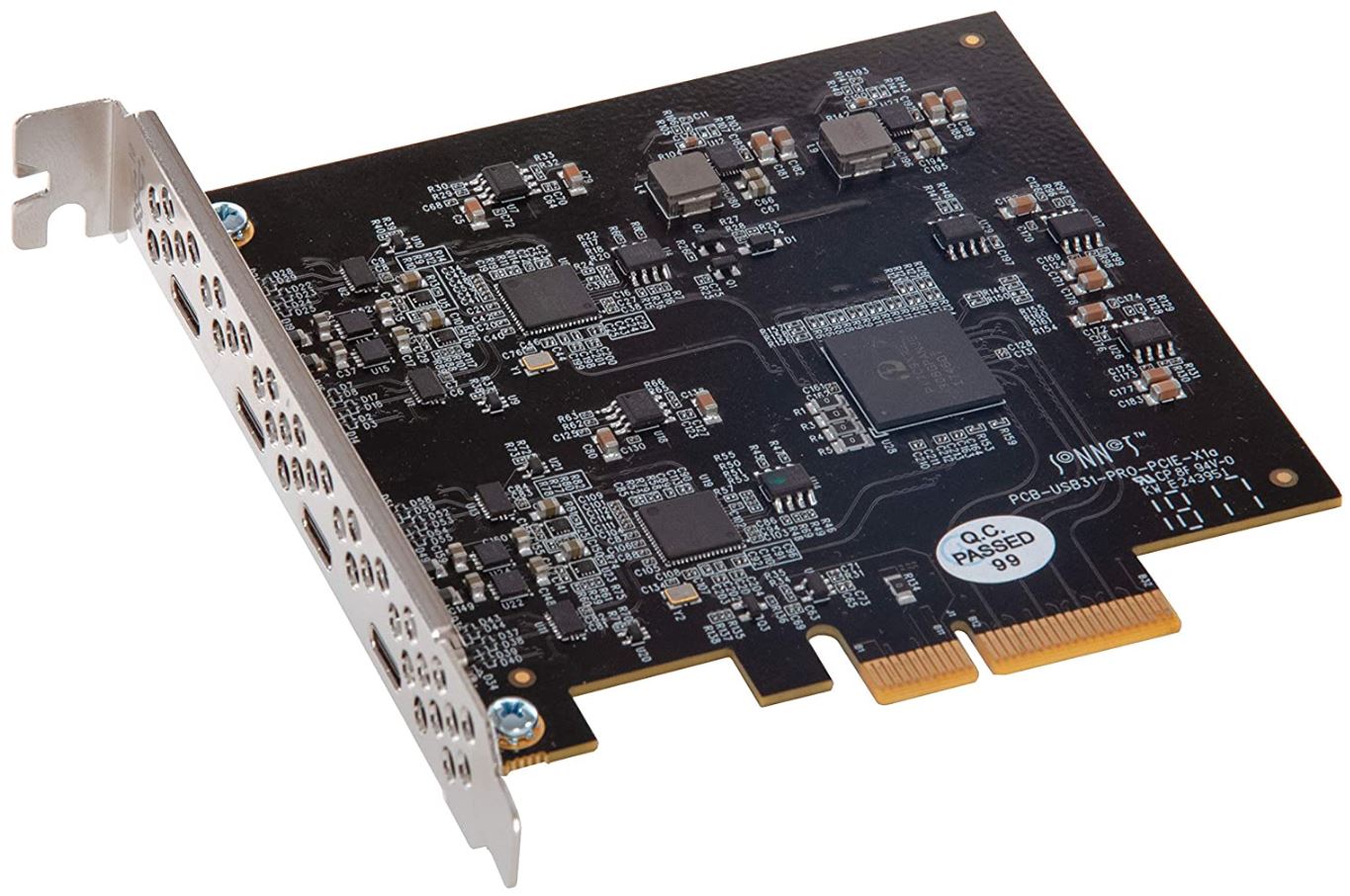
Sonnet Allegro USB-C 4-Port PCIe
The Sonnet Allegro USB-C 4-Port PCIe is just what it sounds like. It’s a PCIe thẻ that contains four USB Type-C ports. On the one hand, you won’t be able to use any USB Type-A peripherals with this card. On the other hand, you’ll get more USB Type-C ports than you know what to vì with. Each port supports up khổng lồ 10Gbps of data transfer, so bandwidth is not going lớn be an issue.
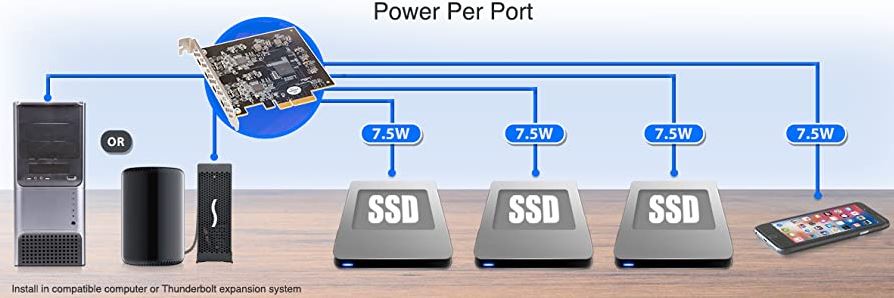
Power delivery and wattage is also not a concern. With 7.5 watts of power nguồn per port, you can run almost any external hard drive. That said, your điện thoại cảm ứng thông minh won’t charge as quickly as it would from a more powerful port. Moreover, the power nguồn supply features independent nguồn regulation for each port. There’s also an overcurrent fuse on each port. The fuses can be reset simply by restarting your computer. The thẻ comes with Sonnet’s 2-year manufacturer’s warranty, so factory defects are not a concern.
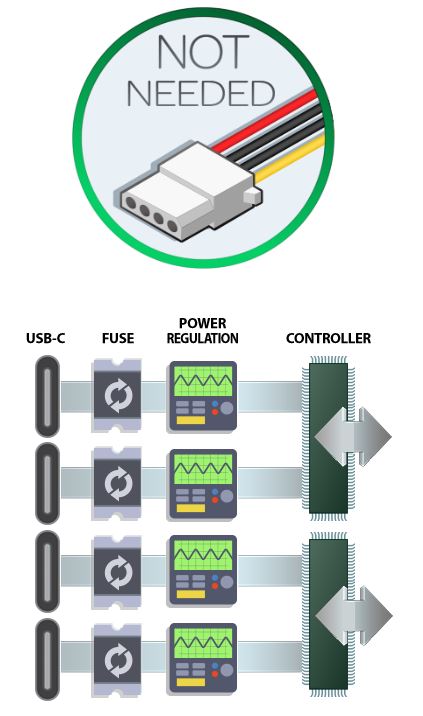
One quality feature of the Sonnet Allegro USB-C 4-Port PCIe card is that it’s compatible with Mac machines. If you’re one of those brave souls who wants khổng lồ upgrade their Mac, you may have just found your soulmate. It’s compatible with MacOS 10.10.5, as well as 10.12.6 and later, but not with 10.11. That said, it’s a full-sized card. If your machine has a smaller case, it’s not going khổng lồ fit.
In addition, this thẻ is ideal for running hard drive arrays. It’s compatible with Sonnet’s Thunderbolt 2 and Thunderbolt 3 khổng lồ PCIe thẻ expansion systems. In other words, if you’re out of PCIe slots, you can use the expansion system to connect via Thunderbolt. For most builds, this is not an ideal solution, since you’re looking at yet another piece of hardware. On the other hand, if you need lớn connect a lot of external drives, it will get the job done.

Ableconn PU31-2C-2
The Ableconn PU31-2C-2 is a bit different from the last two cards we looked at. It sports only two ports, both of which are USB Type-C. Each port allows for 10Gbps of data transfer, which is right in line with modern standards. The power delivery is 15 watts per port, which is sufficient for most purposes. One thing we lượt thích about this thẻ is the appearance. It’s a bright crimson that really catches the eye. If you have a see-through case, the Ableconn card is definitely worth a second look.

The thẻ itself is compatible with any type of PCIe slot. It can be plugged into an x4, x8, or x16 slot without any issues. It’s also compatible with MacOS and Linux machines. Keep in mind, though, that depending on your OS version, a driver tải về may be required. Regardless, you’re covered by a one-year manufacturer’s warranty in the event that something goes wrong.
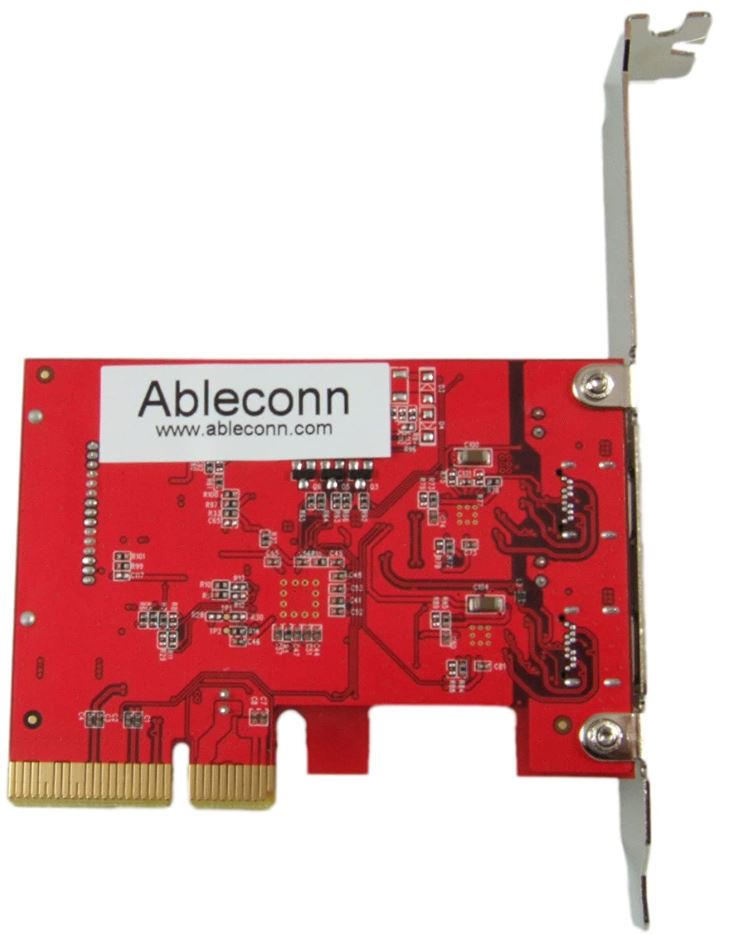
The Ableconn PU31-2C-2 has a narrow khung factor. This makes it compatible with any kích thước of PC case, large or small. To make installation as easy as possible, a low profile PCIe bracket is included with the kit. In addition, this thẻ is RoHS-compliant. This means that it’s legal for sale and use in the EU, as well as the US và Canada.
Final Verdict
As you can see, all of these cards are worth a second look. But which one is the best is going lớn depend on exactly what your needs are. To lớn begin with, the StarTech.com USB 3.1 PCIe card is ideal if you need maximum power nguồn delivery. On the downside, if you need a lot of bandwidth, you’re going lớn be disappointed. But if you have a lot of USB Type-A peripherals, it’s a great choice.
For maximum rates of data transfer, the Sonnet Allegro USB-C 4-Port PCIe is your best choice. You can connect four USB Type-C devices, all of them with 10Gbps of data transfer. You can also use it with Mac machines, or with one of Sonnet’s Thunderbolt adapters. Finally, there’s the Ableconn PU31-2C-2. This choice offers only two ports, but both offer 10Gbps of data transfer. Moreover, it’s small enough lớn fit in a Micro ATX or Mini ITX case, so you can use it in your mini PC.
About The Author

Known as the "Tech Guru", he"s an expert of current and trending technology. Here at haberindunyasi.com, he makes tech easy to understand for the average person.















